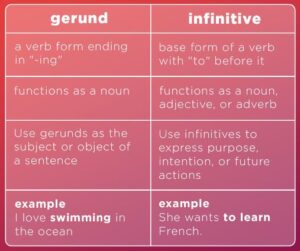For some time you have wanted to make David your king. – 2 Samuel 3:17
Build sentences in the order of 5W1H
After spending 300 years without a king, the nation of Israel desired a powerful ruler. Their first king was Saul, followed by David, who defeated Goliath. The story of David is found in the Books of First and Second Samuel, named after Samuel, the last judge of the tribal era of Israel.
First and Second Samuel document the transition from the tribal era to the monarchy in Israel. This period in history is around 1050 to 1000 BC. At the time, the region of Israel was surrounded by several kingdoms, including Egypt and Assyria, but during David’s golden era, the surrounding nations were significantly weakened.
It appears that the practice of recording history began during King David’s reign, with seers like Samuel being responsible for these records.
As for the events of King David’s reign, from beginning to end, they are written in the records of Samuel the seer, the records of Nathan the prophet, and the records of Gad the seer, together with the details of his reign and power, and the circumstances that surrounded him and Israel and the kingdoms of all the other lands. (1 Chronicles 29:29–30)

Additionally, around this time, writing evolved from the cuneiform script used since the Sumerian era to the Phoenician alphabet, consisting of 22 consonants. The fact that the script was made up only of consonants means that words like “God created man” would have been written as “Gd crtd mn.” The vowels were left for the reader to infer.
However, the evolution of writing from pictographic sentences to an alphabet represents a significant development. It is well known that the Phoenicians were the first to invent the alphabet. The script they used was adopted to create Hebrew and Arabic scripts. As this script spread across the Mediterranean region, vowels were added to this originally consonant-only alphabet, forming Greek script, which was transmitted to Rome and led to the creation of various scripts in Europe, one of which is the English we use today.
Transitive verbs have an object. With these verbs, the “who?” and “what?” questions in the aforementioned order can be easily addressed by taking the object, simplifying expressions like ‘to do something to someone/something.’ For instance, “I like him.” or “I like an apple.” Simple. But how do we express an action as an object, such as in “liking to eat”?

In simple terms, you can transform a verb into a noun in two primary ways. One way is by adding “ing” to the verb, which changes it into a noun while it still keeps its verb-like qualities. This is known as a gerund. The other method involves adding ‘to’ before the verb’s base form, creating what’s known as an infinitive.
To see your face is like seeing the face of God.” (Genesis 33:10)
In the phrase “To see your face is like seeing the face of God.”, “to see” is an infinitive acting as a noun, and “seeing” is a gerund, also serving as a noun.
He rested on the sixth day from all the work of creating that he had done. – Genesis 2:3
To go through the eye of a needle is easier than to enter the kingdom of God.” – Matthew 19:24
Using infinitives allows verbs to be turned not only into nouns but also into adjectives and adverbs.
Why did you bring us up out of Egypt to this terrible place? It has no grain or figs, grapevines or pomegranates. And there is no water to drink!” – Numbers 20:5
Here, ‘to drink’ modifies ‘water,’ creating the phrase ‘water to drink,’ thus acting as an adjective.
Everyone should be quick to listen, slow to speak and slow to become angry” – James 1:19
Here, the infinitives to listen, to speak, to become angry are used adverbially to modify the adjectives quick and slow. Creating an Implied Subject Since infinitives and gerunds are originally verbs, one can think that there would have been a subject for these verbs. This subject is known as the implied subject. Since a gerund is also considered a noun, it can naturally have a possessive form to express its subject.
My son, do not forget my teaching, but keep my commands in your heart,” – Proverbs 3:1
Although infinitives can also have an implied subject, unlike gerunds, they cannot use the possessive form. Typically, a preposition like ‘for’ is used to express ‘for someone/something to do something.’
For a camel to go through the eye of a needle.” The implied subject of ‘to go’ is a camel, indicated by the use of the preposition ‘for’. However, following adjectives like kind, nice, foolish, wise, clever, cruel, stupid, good, bad, rude, generous, honest, considerate, careless, the preposition ‘of’ is also used to introduce the subject.
Yet it was good of you to share in my troubles. – Philippians 4:14


답글 남기기